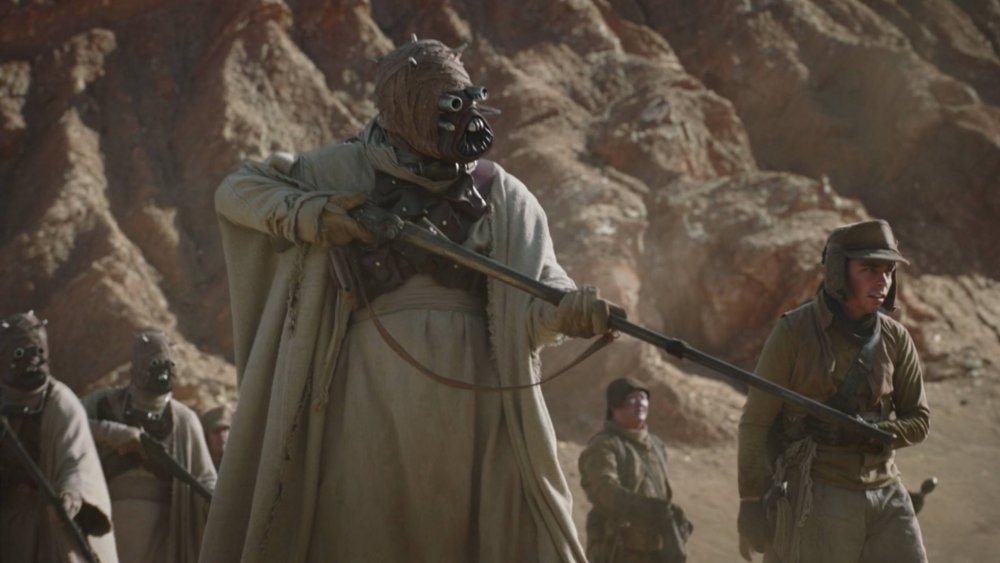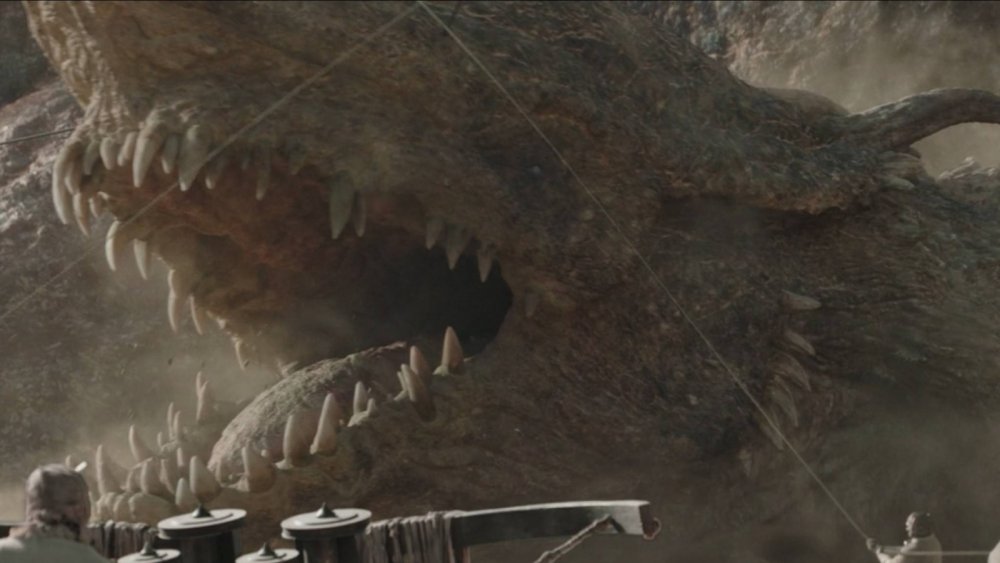What You Didn't Notice About The Mandalorian Chapter 9's Big Battle
Contains spoilers for The Mandalorian season 2, episode 1
The Mandalorian became the flagship series of Disney+ when its first season debuted in November 2019. Less than a year later, and the series is still going strong, with its recently released season 2 debut episode showing there's still plenty of gas left in the tank for this Star Wars show.
At the end of season 1 of the series, Mando (Pedro Pascal) and the Child (otherwise known as Baby Yoda, for those of you into memes) barely escaped from the clutches of Moff Gideon (Giancarlo Esposito). Now, the duo is off to find other Mandalorians who can help them in their quest to reunite the small creature to its people. While Mando and his unofficially adopted son would probably like a minute to catch their breath, The Mandalorian chapter 9 proves there's no rest for the wicked. The pair soon find themselves in the abandoned town of Mos Pelgo on Tatooine. Mando meets with the town's Marshal, Cobb Vanth (Timothy Olyphant), and agrees to help the people in the surrounding area by ridding them of a pesky Krayt Dragon.
It all leads to a massive showdown between Mando's forces and the terrifying monster. Based on at least one Reddit thread detailing the sequence, it's clear fans are hyped over the big battle that took place, but there's one technical detail of the conflict you may not have picked up on the first time around.
The aspect ratio changes during the Krayt Dragon fight
During the Krayt Dragon battle, the aspect ratio enlarges right around when the beast emerges from its cave. It goes from wide to fullscreen, making for an incredibly dynamic and intriguing editing choice.
One Redditor praised the stylistic choice, writing, "That was dope! I loved how the camera seems to be more dynamic than last season! I actually felt dizzy during the fight with the Krayt Dragon. Big screen needed! Amazing!" They bring up a good point about how the aspect ratio change isn't just there for its own sake. It marks a shift in tone and perspective. A lot of character work precedes the final battle, and once we see the dragon in all its glory, it's clear we're in for a huge action sequence. The screen needs to encompass as much space as possible so that you can see every last detail of the fight, making it almost feel as though you're watching a big-budget action movie from the comfort of your living room.
It definitely paid off to watch the latest episode of The Mandalorian on the biggest screen you could, seeing as how it utilized technology popularized by IMAX cameras. It's unclear if the production actually used a special camera to achieve the wider ratio or if it was done in post-production, but it made for a noteworthy moment that gave the Krayt Dragon the live-action debut it deserves.
Overall, this further proves that The Mandalorian has done more than just give fans an exciting new Star Wars story. It also revolutionizes new technology that will hopefully become more commonplace in other film and TV productions in the years to come.

